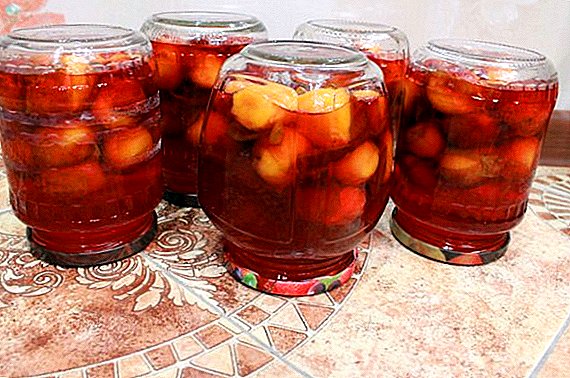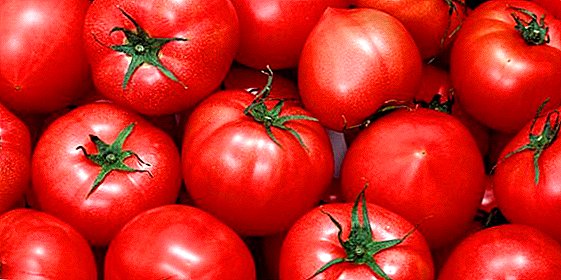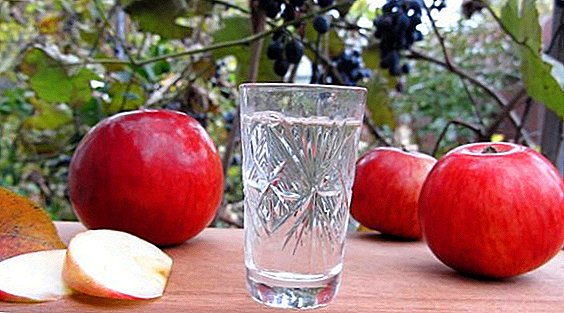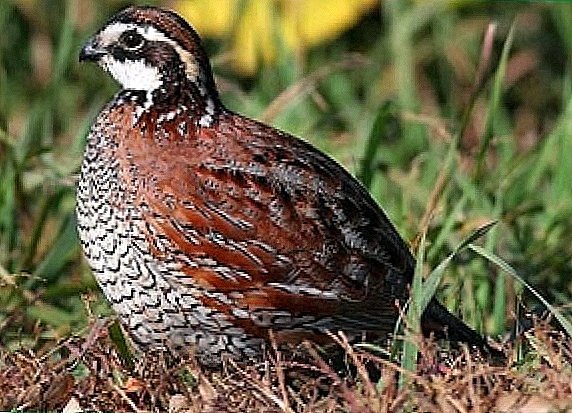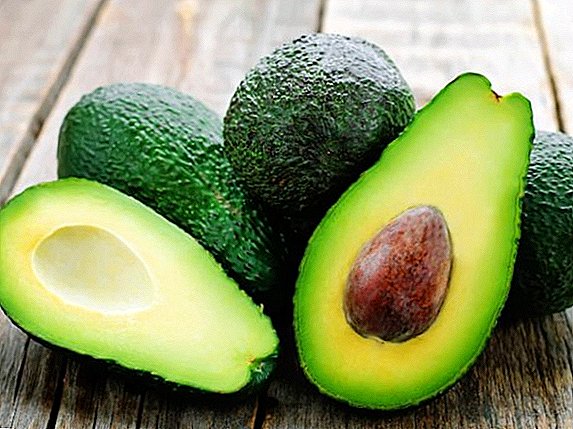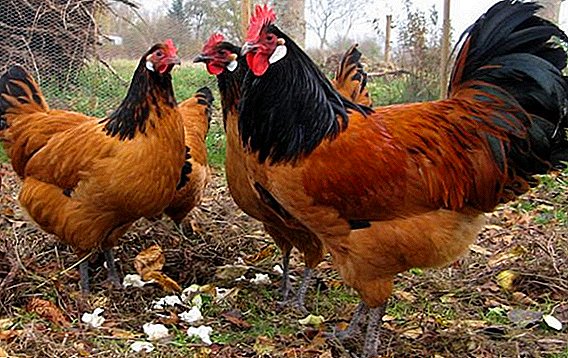 When breeding chickens at home, farmers seek to optimize costs and maximize productivity. That is why breeders for a long time tend to bring the most productive breed of poultry. Such indicators can boast Forverk breed chickens. In this article we will consider the main characteristics of this breed and the requirements for the care of these birds.
When breeding chickens at home, farmers seek to optimize costs and maximize productivity. That is why breeders for a long time tend to bring the most productive breed of poultry. Such indicators can boast Forverk breed chickens. In this article we will consider the main characteristics of this breed and the requirements for the care of these birds.
Selection
Breeding new breeds of poultry breeders were engaged for a long time. Thanks to their work, breeds of chickens were created that differ in their productivity and appearance. Of all the existing breeds, I would like to highlight the Forverck chickens. 
These birds not only combine optimal body weight and egg production, but also a beautiful appearance.
German breeders were engaged in breeding this breed at the turn of the XIX-XX centuries. They crossed representatives of the Orpington, Laekenfelder and Andalusian chickens with German feathered Ramelslohers. Breeders sought to create chickens with good productivity.
Orpington chickens are characterized by good egg production and have tasty and tender meat.
Lakenfelder have good indicators for laying eggs, while live body weight in chickens does not exceed 2 kg, in addition, this species is rare. Andalusian breed belongs to the egg-laying.
That is why these birds have become a good platform for creating a new breed that meets the needs of German farmers. 
Did you know? Chickens of this breed got their name in honor of the German breeder Oscar Vorverka, who first brought this species of birds.
This breed was bred in 1900, but was only put on public display in 1912, when the world exhibition of poultry farmers was held in Berlin. These birds were quickly spread by farmers due to the good combination of excellent productivity, beautiful appearance and docile nature.
Description and Features
Forverks are particularly attractive, making them frequent inhabitants of small farms. Let's take a closer look at this breed of birds. 
Appearance and physique
Representatives of this breed have rather large dimensions, which is especially atypical for representatives of egg hybrids:
- The torso is down and low set, and the back is rather wide. If you look at these representatives of birds, it is easy to trace a parallel line of the back relative to the ground.
- Wide sides make the chicken visually big and a little clumsy, the volumetric and rounded breast complements the overall picture. Small wings are closely pressed to the body, and the shin and thighs have a poorly defined structure.
- The head is small. It can be even more characterized as medium-sized, it is proportional to the whole body of the bird.
- Sparse plumage of the head makes its features more expressive, and the yellow-orange or red colors of the eyes further emphasize the beauty of this breed.
- The dark beak, red scallop, oval-shaped lobes and rounded earrings do not strongly distinguish this breed from other birds.
- The lobes of both females and males are white in color.

Did you know? Nowadays, the Forverk chickens did not receive widespread popularity, as their numbers declined significantly during World War II.
The dark coloration of feathers envelops the head and neck of medium size, which creates the feeling that chickens are wearing a dark mask. The roosters of this breed are colored gold, and against its background the wings with black color stand out from the inside.
The plumage of females predominantly has a red-brown color, however, the head and tail of both hens and cockerels are painted in dark colors. German birds have a dense plumage structure with a small layer of fluff.
The tail of the cock is large and lush with a twisted end, the females have a smaller tail.
Their legs are of medium length, on which there is no any feathering, besides they are distinguished by a very thin bone. Layers have a small comb, which is set vertically and only the back of it is slightly inclined to one side. 
Temperament
From the English ancestors, the Forks inherited a calm disposition and a balanced character. They are not exposed to stressful situations, as this breed is not shy. This feature has no negative effects on the health and egg production of chickens.
It will be useful for you to learn how to increase egg production in chickens in winter, what vitamins to give to increase egg production.
Birds very easily and quickly become attached to a person, which may adversely affect in the process of moving. Very often, experienced farmers have noted that the Forverk chickens easily recognize the owner and allow them to be easily picked up.
A quiet character and a calm temperament guarantee the peaceful existence of all representatives of the Forverk, moreover, they easily get along with representatives of other breeds.
Hatching instinct
Along with beautiful coloring and trusting character Forverck chickens have a significant drawback - this is a poorly developed maternal instinct. That is why the breeding of this breed can not do without an incubator, which can significantly simplify the work of farmers. 
This behavior is explained by the fact that in the process of breeding this breed, the chickens have lost the gene that is responsible for the maternal instinct. Although there were cases when among the representatives of the Forks there were good moms.
Important! In the process of breeding, individuals with color defects, a modified body shape, the presence of earrings of red or pink color, as well as paws of light shades and dark eyes are not allowed. The presence of such changes may seem insignificant, but after 3-4 generations you will have to grow ordinary village hens instead of elite ones.
Productivity
Live weight and egg production are the most important indicators that breeders were guided by in the process of breeding new species. Thanks to good performance, this breed was presented to the whole world.
Live weight chicken and rooster
The mass of the rooster and the hen is almost commensurate. An adult rooster can reach a weight in the range of 2.5-3 kg, while the weight of a chicken ranges from 2 to 2.5 kg. For example, their ancestors, orpingtons, which became the source of genes for this species, had a mass of 4.5–5.5 kg, and these are only layers. 
Weight gain, like foreplay growth, lasts for 1 year, however, with some representatives it may last longer.
Many gourmets appreciated this type of feathery due to the good taste of meat. With age, the taste of chicken changes slightly, but this decline is not particularly noticeable.
When they start to trot and what is egg production
When reaching 6 months, puberty occurs birds. It was during this period that most of the representatives of this breed begin the egg-laying period. However, in some hens it may be 2-3 weeks late.
During the first year of its life, a hen can carry up to 170 eggs, and in the subsequent years, about 140. The average egg weight is approximately 50-60 g, its coloring has a light beige shade. 
Did you know? The largest breed of chickens in the world is considered to be representatives of the breed Bruhma. The live weight of the rooster reaches 6-7 kg, however, in terms of egg production, they are at an average level (120 eggs per year). But the record for egg production belongs to a leggorn of the Leghorn breed - 371 eggs per year. Interestingly, the weight of such a hen does not exceed 1.7 kg, and a rooster - only 2.5 kg.
What to feed
An important element in the process of breeding any domestic animals is feed. After all, it depends on its composition and quality, how quickly the bird will gain weight and what quality the eggs will be.
Only a balanced diet will allow the birds to gain the maximum weight in the shortest possible time, and their eggs will contain the maximum amount of nutrients.
Chickens
Forverk is growing quite rapidly, and in this connection chickens and juveniles especially need proteins, minerals and vitamins. The best source of all necessary substances is food. 
Feed from the diet of young animals is better to exclude, because it contains a growth stimulator and can cause irreversible defects in the development of chickens.
In the first days of life (1-5), young chicks are fed with a mixture of boiled eggs, low-fat cottage cheese and crushed grain. All these components should be mixed in proportion: 2 g eggs, 1 g of cottage cheese, 4-5 g of grain per chicken.
Learn more about what and how to feed the chicks.
Starting from the 5th day and up to the 10th day, crushed shells and chalk, cake and greens are added to the mixture obtained. Here it is also important to observe the proportions: chalk and shell rock should be no more than 0.2 g, greens - 5 g and oil cake - 1 g per chicken.
From 10 to 20 days, cereals (25 g), fresh greens (10 g), fish meal (2 g), cake (2 g), finely chopped boiled potatoes (5 g) and cottage cheese (1 g) are introduced into the ration. But boiled eggs from the diet must be removed. From 20 to 30 days of life, chickens are fed with cereals, boiled potatoes, greens, meat and bone meal, low-fat cottage cheese and chalk. 
All these ingredients are mixed in the following ratio: 40: 15: 12: 3: 4-5: 2 g per chicken.
Salt is recommended to be introduced into the diet only from 30 days in a small amount (0.1 g per chick).
To maintain cleanliness, the habitat of young stock is regularly cleaned and feeders with water trough are washed out. At the same time, the water in the drinker should be warm and not fall below +35 ° C. As the chicks grow up, they begin to be accustomed to water at room temperature.
When cutting greens for food, carefully watch out for poisonous herbs, for example, spurgeon or celandine. These plants simply destroy young offspring.
Important! It is strictly forbidden to feed moldy bread to chickens, since microorganisms that develop in it can cause serious poisoning in the fragile organism.

Growing chickens are fed at intervals of 4 hours. Gradually increase the content of grain feed to 50-65 g, boiled root crops - up to 30 g and greens - up to 20 g per one chicken. Additionally, mix the meal, cottage cheese, crushed chalk and shellfish, as well as fish meal.
The amount of food you give to chickens must be calculated in such a way that they eat everything in 30 minutes. In the process of growth you need to watch the chickens. They should eat well and move actively.
If you notice that some chicken has become sluggish, moves a little and does not eat well, then it must be planted from the fellow and show the vet. Such actions will save the life of the chick, as healthy and strong chickens can just trample it.
Adult chickens
Nutrition adults forvorkov should be balanced and contain a large amount of minerals and vitamins. For the proper preparation of the diet, farmers are encouraged to divide the food by season. In this case, the birds will receive a maximum of useful substances. 
In spring and summer, when there is a large amount of greenery, it is recommended to walk the bird so that it plucks grass. In this case, feeding is reduced to 2 times (in the morning and in the evening).
It’s not necessary to worry about the chickens starving, as they themselves find all the necessary and missing elements.
In this case, the diet should contain the following types of feed:
- whole grain - it can be corn, wheat or barley (50 g per individual);
- wheat bran (25 g);
- cake and bone meal (2-3 g per chicken);
- crushed shells and chalk (3 g);
- table salt (0.7 g);
- dry protein feed (7-10 g).
With the advent of cold weather comes a difficult period for the bird, and it needs a more nutritious diet, because there is a lack of greenery. In addition, energy consumption increases and the layers require more food. 
That is why the daily ration of the forverka should consist of the following products (in grams per 1 bird):
- wheat, barley and maize - 60-70;
- wheat bran - 25;
- cake - 5;
- bone meal - 5-7;
- grass meal - 5;
- root vegetables - 100;
- chalk and ground shells - 5-6;
- salt - 0.7;
- protein feed - 10-15.
Additionally, during this period it is necessary to install a feeder, where sand and crushed shells will be regularly filled. The sand will promote normal digestion in chickens, and from the shell they will replenish the supply of calcium, which will make the eggshell of their eggs more solid.
Useful is also additional feeding with young shoots of nettle, dandelion foliage and fruit waste, which must be prudently prepared in summer. The tops of carrots and beets contain a large amount of vitamins and minerals, so they can also be given to birds. 
For better preservation, they are crushed and stored in bags. Additionally, you can enter into the diet dairy products with the addition of dry yeast.
Important! If in the summer to prepare wild plants, for example, nettle, yarrow, mountain ash or hawthorn berries with wild rose, in the winter you will not need to buy vitamin supplements. For better preservation, they are crushed and dried in a shady place. In winter, they are added to the mash.
Conditions of detention
Proper care is 80% of the successful breeding of this breed. Forverki are easy to maintain and undemanding in their care than they differ from other chickens. Consider simple requirements and recommendations for the conditions in which they will live and carry eggs.
Requirements for the house
The area of the house directly depends on the number of birds living in it. So, on 1 square. m of useful area can be placed no more than 5 laying hens or 17 chickens. The height of the ceiling is recommended to do no higher than 1.8 m, since otherwise in winter the room will be much harder to heat. 
It is better to make the floor covering smooth in order to facilitate cleaning and disinfection. At the same time, the material should save heat well. The floor is made of wood, brick or mud with rubble.
The temperature in the room with the bird should be controlled on the basis of who is located inside. For example, the temperature above +8 ° C is suitable for adult chickens, and the young stock over the age of 21 days feels comfortable at temperatures above +16 ° C, while for chicks it is necessary to keep the heat at least +21 ° C.
With a small number of hens perches can be fixed around the perimeter of the room at a certain distance from the wall. Such a design is often made of wood or chipboard. The optimal dimensions for keeping one chicken are selected in the calculation: the minimum length of the crossbar should be 20 cm, and the height - 90 cm.
At the same time, the distance between two levels should be at least 30 cm. It is better to choose a place for them near a warm wall, where birds will be protected from drafts. With a large number of birds erect a multi-tiered structure. 
For the chickens to carry eggs in certain places, you need to prepare the nests. In the simplest case, you can use the finished packaging, covering it with hay or sawdust. The height, width and length of the workpiece should be about 30 cm.
You can build a structure made of wood or chipboard. For the convenience of collecting the bottom of the nest is placed at an angle of 10 degrees, due to which the eggs roll into a special tray. Nests should be located in a quiet and dark corner of the room.
In the cold season, the floor in the house is insulated with a bed of straw, sawdust, etc. If there is such a possibility, you can put fern leaves on the floor. Its main advantage is who it does not rot and does not become damp.
Learn how to choose and use a coop fermentation bedding.
In any case, the litter material must be dry. In the event that sawdust is used, it is necessary to carefully monitor that the bird is not hungry, otherwise it will begin to peck on the litter and end up with digestive problems. 
When you start in the house of young, sawdust should be sprinkled with straw for the same purpose. Before you lay the litter on the floor of the room, you need to scatter slaked lime at the rate of 0.5 kg per 1 sq. Km. m. In the summer the floor can be covered with a layer of sand.
In general, sawdust or straw on the floor eliminates the need for daily cleaning in the room, but at the same time, due to the chemical processes taking place in the litter material, they emit a certain amount of heat to help maintain the desired temperature.
But in any case, it is necessary to keep cleanliness in the room for birds, because in a dirty house, together with a large amount of litter, hydrogen sulfide rich air accumulates, which negatively affects the health of the hens.
To exclude this factor, periodic housekeeping is carried out in the poultry house and the room is ventilated. 
Walking yard
The yard for walking birds is best located on the south side of the house. For security, high fencing (about 2 m) is required, since the Forks, although they have considerable weight, still know how to fly.
The total area of the yard should be 2 times the area of the poultry house itself.Between the house and the outside recreational space make a hole with two doors: one from the inside and the other outside at a height of 5-10 cm from the floor level (when laying deep bedding, the hole should be at the level of its height).
In winter, the area in front of the manhole is cleared of snow and covered with straw, and in the summer they install a canopy to form a shade.
In order to reduce the cost of feeding, the yard can be sown with alfalfa or clover. They will be a source of vitamins for forvek. It is also necessary to exclude contact of chickens with wild birds, since the latter can be the source of various infections and diseases. 
How to endure winter cold
In winter, it is important to maintain the optimum temperature in the house and not to let the chickens out for a walk at a temperature below -2 ° C, because otherwise they risk freezing the earrings and the edges of the tuft.
The onset of winter for any bird is stressful. Therefore, forverka comes seasonal molt, which is often associated with a decrease in the length of daylight. When using artificial lighting in the hen house, this period may move to the beginning of winter.
At this time, the chickens need additional protection from cold, damp and wind. To maintain immunity, it is necessary to add various vitamin supplements to food that compensate for the lack of greens during the cold months. 
Advantages and disadvantages
The advantages of this breed include:
- high meat productivity and egg production;
- fast growth;
- unpretentiousness and gullibility;
- beautiful appearance;
- strong immunity which well protects a bird from various diseases.
Important! To protect against dangerous infections, it is necessary to conduct a routine vaccination, and adult chickens need revaccination.

Breed deficiencies:
- the underdeveloped instinct of maternity, which requires the use of an incubator for breeding;
- the need for special care for chickens to increase the survival rate;
- relatively high price for representatives of the breed, as the population was fairly reduced;
- sensitivity to cold, which can affect the laying of eggs.
Forverk is a breed of chickens that have a beautiful appearance, good egg production and optimal weight. It can be used both for home cultivation and on an industrial scale.



